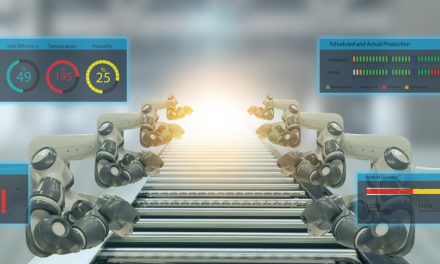Beware Hidden Costs of IoT

By: Michael Ford, Aegis Software
Experienced and trusted providers of commercial software solutions have long made it clear about the costs of software and related support. In the new domestic and automotive IoT market however, some disturbing surprises are coming to light, which many of us have begun to experience, or will soon. We must be careful that we understand the “tricks of this new trade”, and ensure that IoT manufacturing solutions on which manufacturing will grow to depend, do not develop the same sting in the tail.
 Being eco-minded, some years ago a certain columnist bought solar panels for his house. Interested to see the real-time performance, a relatively expensive energy monitoring system was purchased from a company, offering “intuition” into data collected about solar generation, energy usage and export back to the grid. Rather than simply transmitting the data to a local receiver, the device uses IoT technology to send data into the companies’ cloud, a server that stores the data and provides access to the information in a variety of formats through an app and a web service. For five years, this was pretty interesting, looking from time to time at the performance of the panels. Suddenly however, the columnist is informed by the supplier that their web-service is becoming too expensive to sustain, as their customer base had expanded to around 50,000 users, supporting now additional IoT features to newer customer such as, for example, control of domestic heating system. The company therefore decided to introduce a subscription charge for the service, that was to cost the unsuspecting columnist more than the price of a simple energy monitor, every year. It is claimed that hidden away in the terms and conditions, there was a statement that the company retained the right such that at any point in the future they could introduce a charge for the service.
Being eco-minded, some years ago a certain columnist bought solar panels for his house. Interested to see the real-time performance, a relatively expensive energy monitoring system was purchased from a company, offering “intuition” into data collected about solar generation, energy usage and export back to the grid. Rather than simply transmitting the data to a local receiver, the device uses IoT technology to send data into the companies’ cloud, a server that stores the data and provides access to the information in a variety of formats through an app and a web service. For five years, this was pretty interesting, looking from time to time at the performance of the panels. Suddenly however, the columnist is informed by the supplier that their web-service is becoming too expensive to sustain, as their customer base had expanded to around 50,000 users, supporting now additional IoT features to newer customer such as, for example, control of domestic heating system. The company therefore decided to introduce a subscription charge for the service, that was to cost the unsuspecting columnist more than the price of a simple energy monitor, every year. It is claimed that hidden away in the terms and conditions, there was a statement that the company retained the right such that at any point in the future they could introduce a charge for the service.
In the same week, the now disheartened columnist had another similar issue, this time related to a car from a well-known German manufacturer. After three years of ownership, the real-time traffic updates on the satellite navigation stopped working. An email from the company offered the continuation of the service for an annual fee, that works out as being just over half the price of a complete new third-party navigation device that offers free maps and traffic updates for life. Previous cars bought from this same company, from the same series, had provided this same traffic service continuously, without any fee or subscription. Checking the brochure relating to the latest purchase, yes, there it was, in tiny gray writing at the bottom of the page. No-one had mentioned at the time of purchase that this feature had changed from an outright purchase to a subscription service. Going to the website to check out the purchase of the service, revealed a whole range of things that most of us would have expected that we had bought, but were in fact just introductions to subscription services that are charged for after an initial period.
These experiences are not unique, and it seems the practice is growing rapidly. There is no issue essentially in moving from a product-based arrangement to a service-based arrangement, as long as costs are made very clear at the outset. I would have expected that in such cases, the initial purchase price of the subscription system would be lower as compared to when the service was inclusive, but it was not so in either of these cases. It seems however that some companies, especially those whose focus is based in hardware, are either under-estimating the costs of providing IoT based technologies, or are viewing them as a potential to generate stealth revenues. They rely on the fact that practically, no-one fully reads any associated terms and conditions, enabling them to offer initially attractive deals that may not always be as good as they seem.
If we neglect to do this, we are in danger of losing the opportunity for standards to work for us, in both a technical and business sense. IoT technologies offer huge advantages as compared to choices of others where development of bespoke interfaces are needed. Having to get two vendors together to talk, agree, and help develop interfaces was time-consuming and attracts significant cost, over and over again. Third parties offering middleware solutions provide relief for this pain, but at a price. The main price of course being again the risk of dependency and suddenly increasing costs as interface requirements continue to change and evolve on either side. Developing IoT technologies is by contrast far easier, with the ability to develop an interface anytime, anywhere, without dependency on anything, simply seeing the result of communication for example through a single simple cloud-based standard diagnostic tool.
As more and more traditional domestic, automotive and industrial technology includes IoT components, we must all be very careful about what we sign up for. Perhaps a lot of the “hype” in the industry is actually fueled by the ability to create products that tie customers in, then later levy hefty subscriptions. Hiding potential charges is damaging to the industry and even the image of the technology in the market.
In the manufacturing world, especially electronics, we are seeing the introduction of new IoT technologies. An example of one of these is the IPC “Connected Factory Exchange” (CFX), which is a soon to be published, open, consensus-based industry standard, enabling any machine vendor, manufacturer or solution provider to simply create embedded support, without any fear of sudden surprises in terms of licensing etc. The Hermes Standard is another great example where there are no licensing dependencies, and no single organization that might be in a position to levy charges on the use of the format itself. Services, features and functions based on these standards can therefore be trusted from a pricing model stand-point. It is interesting to see CFX and The Hermes Standard working together in a complementary fashion delivering the latest technologies for electronics assembly manufacturing. This is how things are supposed to work. Any company or organization can then utilize these formats to create their own commercial products, without risk to themselves or their customers.
The value of modern IoT formats, such as CFX and The Hermes Standard, is set to revolutionize the industry, reducing costs of ownership and development, whilst increasing inter-machine data availability, leading to the realistic ability for manufacturers to create their digital factories, supporting initiatives such as Industry 4.0. The same however cannot be said for all formats that are present or are being promoted to the industry. We need to be careful. No-one wants to return home to find their house is frozen due to unexpected demand for a subscription to their domestic IoT heating control, nor does anyone want to be driving along the autobahn and receive an unexpected message that the braking system now requires a subscription payment. Let’s not have this practice spread to our production lines.













